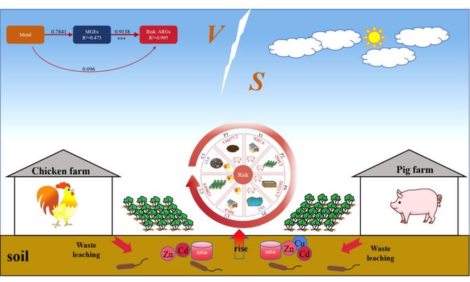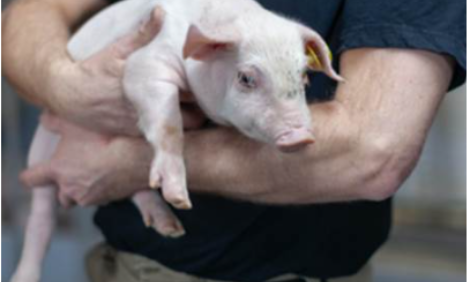



FAO Food Outlook: Pig Meat
In its latest 'Food Outlook' report, the UN Food and Agriculture Organization (FAO) forecasts 2013 global pig meat production to reach 114.6 million tonnes, which is 1.7 per cent more than last year, while trade will be two per cent lower than 2012 at 7.4 million tonnes.Meat and Meat Products
Moderate production growth; trade mixed

World meat production is anticipated to expand modestly in 2013 to reach 308.3 million tonnes, an increase of 4.2 million tonnes, or 1.4 per cent, compared to 2012, according to the FAO's Food Outlook report in November 2013. Growth will be concentrated in the developing countries, which are also the main centres of rising demand.

At the international level, prices have remained high by historical standards for the past two years. The FAO Meat Price Index (2002-04=100) averaged 184 in October 2013, little changed when compared to October 2012. So far this year, a reduction in feed costs has facilitated some price decrease for poultry; however, prices of the other categories of meat have remained either static, in the case of bovine and ovine (sheep) meat, or increased, in the case of pig meat.
International meat trade is forecast to reach 30.1 million tonnes in 2013 – representing 10 per cent of global production. Overall, trade is predicted to increase by 1.1 per cent, a slower pace than in 2012, and well below the rates of six per cent and seven per cent seen in 2010 and 2011, respectively. This is a reflection of improved national supplies in a number of importing countries and a fall in production in some of the principal exporters.
There are marked differences in trade in the different varieties of meat, with moderate growth forecast for bovine meat and a substantial increase for sheep meat, while poultry may remain unchanged and pig meat decline.

Pig Meat
Growth in Asia to sustain production
Continuing several years of expansion, production of pig meat is expected to grow by 1.7 per cent to a record level of 114.6 million tonnes in 2013. Most of the increase is forecast to come from developing countries, where almost two-thirds of production originates. Conversely, the developed countries overall are expected to face a small decline.
Asia is the leading pig meat producing region, accounting for almost 60 per cent of the total. Strong consumer demand and government support policies are anticipated to result in China's output reaching 54.8 million tonnes, nearly half of world output. Recovery from FMD depletion continues to boost production in the Republic of Korea. Elsewhere in Asia, slight to moderate growth is forecast in Viet Nam, the Philippines, Japan, Thailand and Indonesia – in some instances, limited by competition from other types of meat.
In the Americas, Brazil - the world’s fourth largest producer, is set to increase output, stimulated by improved prices. Steady growth is also anticipated for Mexico, underpinned by improved genetics and productivity, which are translating into more piglets per litter and higher animal weights.
In the EU, at 22.5 million tonnes, the second most important producer after China, compliance with animal welfare requirements relating to the housing of sows is expected to depress output for a second year.
In the United States, lower feed costs and increased slaughter, associated with an expansion of the breeding herd, mean that it is on track to register growth, albeit limited. Producers in Canada have struggled to remain profitable and a number have ceasing operations – consequently a small decrease in output is anticipated.
In the Russian Federation, reduced feed prices and government policies favouring large-scale farms are expected to prompt a four per cent expansion.

Trade declines
Reduced output among some of the principal exporting countries and a decrease in demand by several major importing countries are projected to lead to a decline in 2013 pig meat trade with shipments dropping by two per cent, to 7.4 million tonnes.
Imports by Asian countries, representing half of total trade, are set to record a decrease of 2.4 per cent. Procurement by the Republic of Korea is forecast to register a substantial drop for the second year in a row, falling by around 100,000 tonnes, or 20 per cent. This sharp decline is consequent on a build-up of stocks and low domestic prices following a strong recovery of production after a Foot and Mouth Disease (FMD) outbreak in 2011. Japan, the largest importer, is anticipated to cut purchases by four per cent, due to expanding production and competition from poultry and imported beef. Imports by China are expected to rise six per cent as domestic production has been unable to keep up with demand.
In Europe, deliveries to the Russian Federation fell by 15 per cent in the first eight months of this year and are expected to finish the year well below 2012, reflecting growing production, a fall in domestic prices and animal health-related import restrictions. In Ukraine, after imports more than doubled in 2012, animal disease and public health restrictions introduced during the first part of the year have led to a sharp fall off in purchases, now anticipated to finish the year 30 per cent lower. Imports are also down substantially in Belarus, mainly due to restrictions on trade with the Russian Federation related to outbreaks of African swine fever in some regions.
Elsewhere, purchases by Mexico and the United States are anticipated to decrease, while some smaller-scale importers, including Australia and Angola, could see imports grow.

In terms of exports, limited availability in the EU, the United States, Canada and Brazil, which account for 85 per cent of world sales, represents a constraint to trade. Additionally, Brazil has faced health and animal disease-based access restrictions in some markets. As a group, the above four countries are anticipated to record a three per cent reduction in sales. This will be counterbalanced to a limited extent by larger shipments by smaller-scale exporting countries, including China, Chile, Mexico and Thailand. Sales by Mexico, in particular, have risen substantially so far this year, assisted by its newly recognised status as free of Classical Swine Fever.
November 2013








